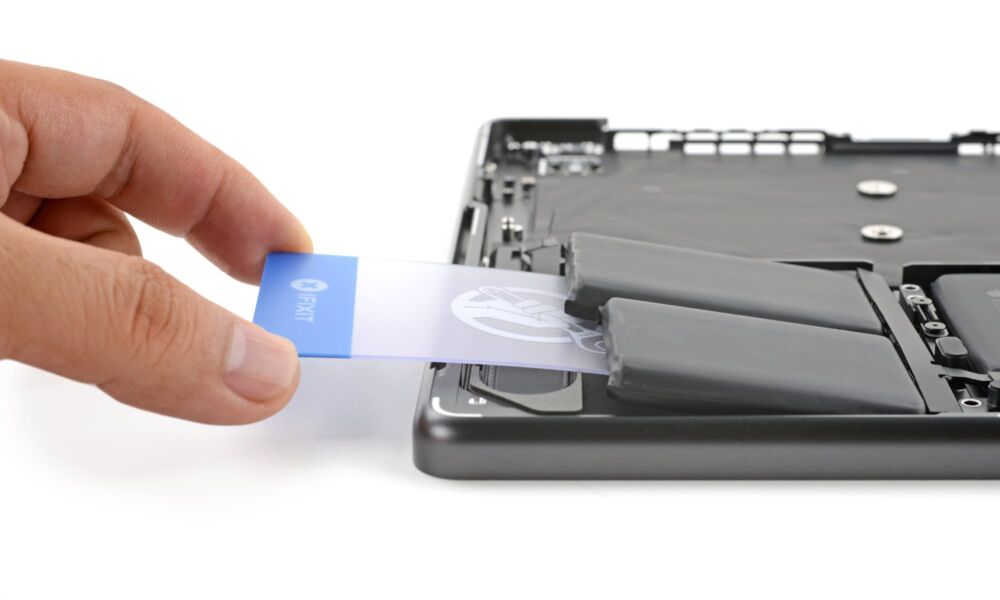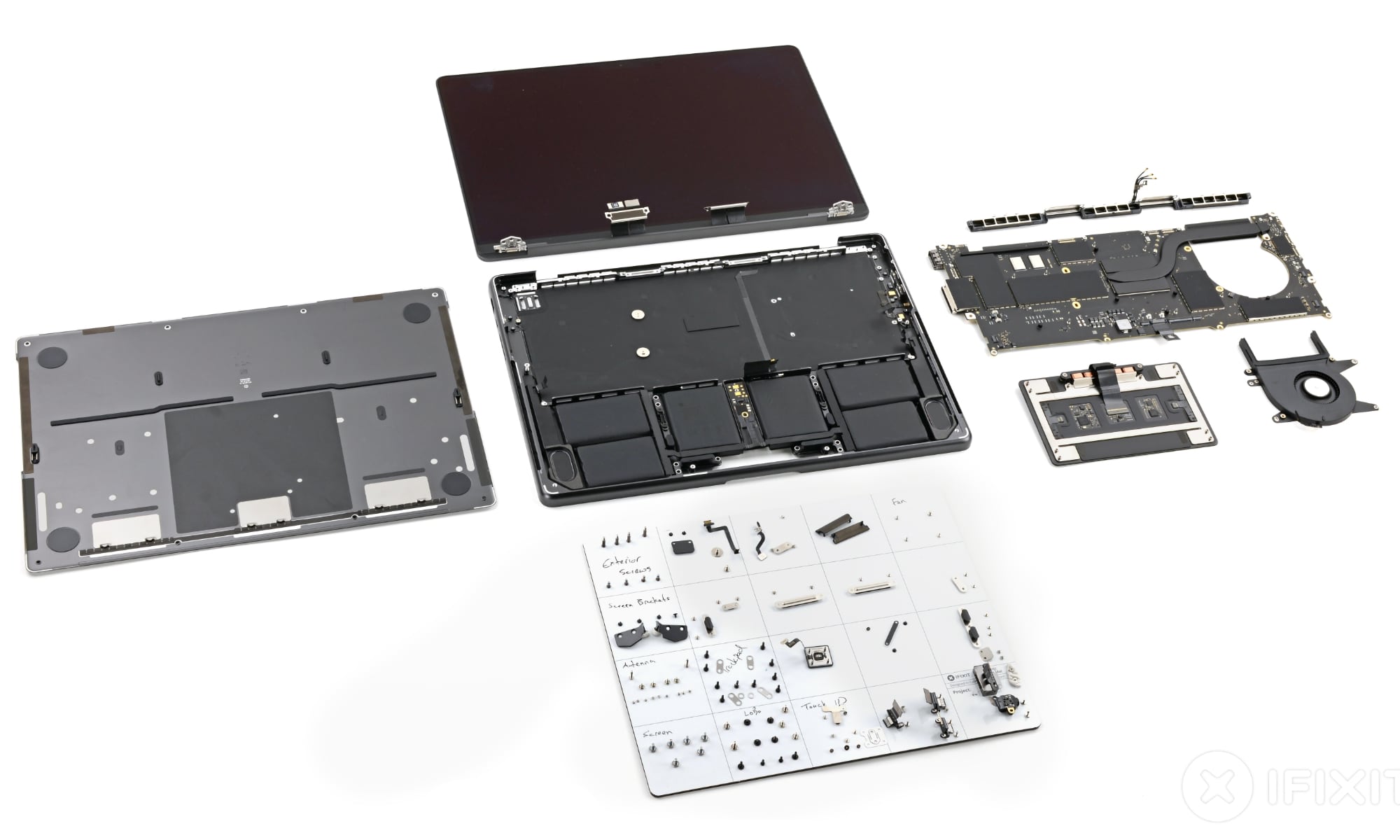The M5 MacBook Pro Shows Smarter Engineering Under the Hood
 iFixit
iFixit
Toggle Dark Mode
Apple unveiled a new 14-inch MacBook Pro powered by its latest M5 silicon earlier this month — a nice performance boost that was otherwise remarkably similar to its 2024 M4 predecessor. However, an iFixit teardown reveals some subtle engineering changes that make a measurable difference for repairability.
Most of the user-facing benefits of this year’s MacBook Pro come from the M5 chip. In addition to the typical generational performance boost, Apple has increased memory bandwidth and added Neural Accelerators to the GPU, giving AI workflows a leg up. Beyond that, the new model only improves SSD performance and now offers a 4 TB SSD storage option.
However, once the folks at iFixit got their hands on the new MacBook and cracked it open, they discovered some refinements hiding deeper within that show “Apple inching ever so slightly closer to a future where MacBooks might actually be repairable.”
Small Design Tweaks with Big Implications
The changes aren’t anything revolutionary, but they do seem to indicate that Apple is willing to move toward easier repairability — a change that will make a big difference to do-it-yourselfers and independent repair shops. It also helps that Apple is seemingly publishing its repair manuals right away — a pleasant surprise, considering they used to take months to appear.
The internal layout is very similar to that of the M4 MacBook Pro, but Apple seems to have improved what iFixit calls the “finicky” battery-replacement process of the previous model. The latest repair guides make key steps clearer, such as removing the Battery Management System (BMS) cable to cut power — an important step that iFixit knows about but wasn’t previously covered in Apple’s repair manuals.
That’s a thoughtful touch that could prevent an accidental short circuit while you make your way through some screws and flex cables to physically disconnect the battery.
Carsten Frauenheim and Elizabeth Chamberlain, iFixit
The battery is also more accessible than it was before — but only slightly. The biggest change is that you no longer need to remove the trackpad to reach a pair of adhesive pull tabs that let you pull out the battery without prying or using solvents to dissolve glue. “It’s a modest change that simplifies one of the more delicate steps in past models,” iFixit notes. However, the overall assembly is still integrated with the top case, so some fiddling and disassembly are still required to get at it.
The real good news here is that this change hits at a day when Apple might actually allow swapping only the battery, rather than the entire top case of the MacBook, as has been the norm for years. Battery replacements tend to cost hundreds of dollars more than they should because Apple requires a bunch of unrelated components to come along for the ride.
Apple’s official replacement process requires swapping the entire top case, keyboard and all, just to replace this single consumable component. And it has for a long time. That’s a massive and unreasonable job, requiring complete disassembly and reassembly of the entire device. We’re talking screws, shields, logic board, display, Touch ID, trackpad, everything. In fact, the only thing that doesn’t get transferred are the keyboard and speakers.
Carsten Frauenheim and Elizabeth Chamberlain, iFixit
A Slow March Toward True Repairability
However, Apple’s repair information suggests this could soon change. In addition to iFixit’s discovery that the battery is now easier to remove, Apple’s Self Service Repair store notes that an individual battery replacement part could be coming “in the future.” Still, the only option available today is the entire “top case with battery and keyboard” — which costs $527.
Digging past the battery, iFixit also found that the ports and fans were fully modular, yet also buried below the logic board, requiring “a marathon of screw removal, cable disconnects, and delicate maneuvering of expensive stuff before you can reach them.” It’s ironic, as iFixit acknowledges that Apple is “top of their class” in making ports individually replaceable, yet fails miserably at making them accessible.
One area that has yet to see any improvement in repairability is the display. It’s still secured behind an antenna bracket “loaded with tiny Pentalobe P2 screws,” before you can even get at the hinge. Repair technicians then also have to deal with the Touch ID sensor, which requires recalibration after you reinstall it.
While iFixit acknowledges that these subtle improvements are a step in a positive direction toward greater repairability, they aren’t enough to raise the repairability score for the new MacBook Pro, which still comes in at a 4 out of 10 — the same score given to the 2023 M3 model (the 2024 M4 one wasn’t rated).
“Apple’s headed in the right direction, but slowly,” iFixit says. With every new model, we see hints of a more repairable MacBook hiding beneath the surface. For now, the ball’s still in Apple’s court—and it’s been there for a long while.”








